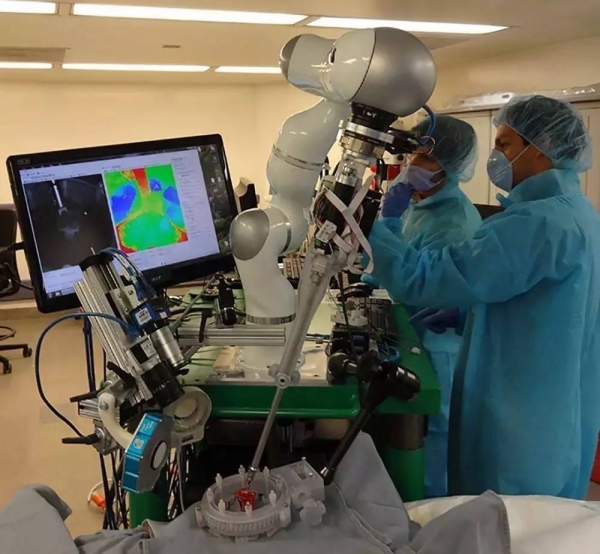Surgery no longer needs a human doctor just a matter of time?
Once, when it comes to robots, they will think of the appearance of their icy mechanical parts. The blunt machine language is controlled by humans to serve human beings. Nowadays, artificial intelligence and other technologies give robots a "personality", one by one. Robots with different functions appear in people's daily lives.
This article will focus on the field of medical robots, the famous American oncology expert, the founder of virtual surgery Dr. Shafi Ahmed once said: "The replacement of surgeons with surgical robots is only a matter of time. There will be no more doctors in the surgical room in the future. There are no endless operations from morning to night."
do you know? As early as 1985, Americans tried to use the Puma560 industrial robot to assist in brain biopsy, which was the initial prototype and exploration of surgical robots. In the late 1980s and early 1990s, the RoboDoc surgical robot was used. Surgical machine for surgery; In 1994, Aesop's mirrored robot developed by Computer Motion of the United States can imitate the function of the human arm, eliminating the need for manual control of the endoscope by the assistant, and achieving a more precise and consistent lens than the artificial control. Exercise provides a direct and stable view for doctors (until 2014, surgeons have used Aesop robots to perform more than 75,000 cases of minimally invasive surgery worldwide); on January 9, 1999, US Intuitive Surgical released The Da Vinci Surgical Robot System was officially approved by the US Food and Drug Administration in 2000 and became the world's first robotic surgical system that can be used in abdominal surgery.
Last year, a medical robot called STAR (Smart Tissue Autonomous Robot, hereinafter referred to as STAR Robot) came out and quickly occupied the headlines of more technological media. Why? Because it is the world's first surgical robot that can handle soft tissue autonomously, it can be operated autonomously through a special algorithm program to avoid human errors that may occur during surgery. This also marks a major step forward in the unmanned surgery.

STAR autonomous surgery robot
STAR robot background reveals
The STAR robot is Peter C. of the Children's National Health System in Washington, USA. Kim team research and development. After seven years of exploration and running-in training, the Kim team integrated near-infrared fluorescence (NIRF) marking and 3D light field imaging to solve imaging problems. The imaging system generates 3D stereoscopic images by capturing light field information of tissue organs. With this imaging system, STAR can accurately and unrestrictedly monitor the movement and changes of the target tissue throughout the procedure. STAR is like having an "eye" that knows which tissue is the target of its surgery and which one cannot be touched. In line with STAR's imaging system, the Kim team has independently developed an intelligent algorithm. This algorithm can not only make a surgical plan, but also can judge the changes of the organization according to the information returned by the imaging system, and then adjust the surgical plan.
The STAR robot will complete the whole process of the operation autonomously, the doctor does not participate in the manipulation, only need to stand next to supervision. In order to respond to an emergency, the doctor can suspend the work of the robot at any time.
It has done two sutures of pig intestines, one in vitro and one in vivo, all of which have been successful. At the 2017 International Conference on Intelligent Robotics and Systems (IROS 2017), the STAR R&D team presented the latest findings from STAR robots: robots are able to cut tissue more accurately and damage surrounding tissue compared to professional surgeons. It is also smaller.
STAR robot's "pork tissue cutting experiment"
Axel Krieger, an associate professor at the School of Mechanical Engineering at the University of Maryland, who participated in the study, said: "I really believe that robotic surgery is a trend in surgery."
To carry out the research, the researchers bought three kinds of pigs in the butcher's shop: pig skin, fat and pork. Before comparing STAR robots and surgeons for surgery, it is first necessary to confirm that STAR robots can accurately cut these three irregular soft tissues, because these soft tissues are elastic, have large slidability, and are prone to errors when cutting.
Medical Instruments And Equipment
Medical Instruments And Equipment,Nucleic Acid Extraction Robo,Nucleic Acid Extraction Instrument,Viral Nucleic Acid Extraction Method,Urine Analyzer
Jilin Sinoscience Technology Co. LTD , https://www.jlgkscience.com